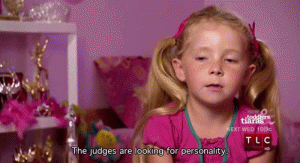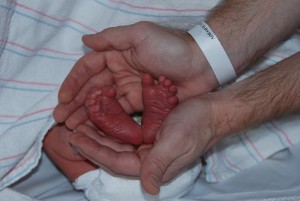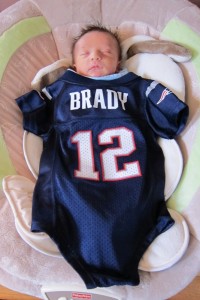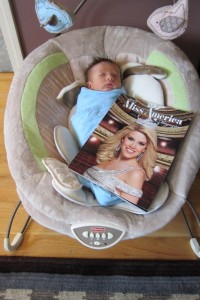Lifetime's Season 2 of Dance Moms continues to get sillier and sillier as the contrivances spin out faster than a terrible fouetté turn. What can you say when Kendall leaves Abby's studio and ends up at Candy Apples in Ohio besides, "Yeah, right! Producer interference!" in Episode 8, "The Runaway Mom?" And Abby's decision to have the girls compete as burlesque dancers in Episode 9's "Topless Showgirls" is so obviously meant to shock it's painful. The show, unsurprisingly, made headlines after that tasteless move (even I admit to being mortified when Abby yelled out, "Crotch! Boobs!" in rehearsal).

[Not surprisingly, and somewhat reassuringly, Lifetime is not allowing any rebroadcasts of this episode. Pushed the envelope TOO far (toward pedophilia), clearly. Love the following line from this March 23rd article about the episode being pulled: "Coincidentally, the yanked episode contains a subplot in which a child is transformed into a literal piece of meat."]
But once in the while the show does manage to say something interesting about the state of competitive dance. Previously they touched on the issue of parents lying about their children's age and age fallbacks. Runaway mom Jill's departure in Episode 8 allowed Abby to discuss a serious issue in dance: choreography theft. Sometimes studios steal choreography from others that they see at competitions, which has long been an issue on the competitive circuit, as I discovered during my research. But dance isn't just about creativity and artistry-- it is also a business, especially for studio owners like Abby. That choreography is her work product, so when Kendall uses it to "win" for someone else that is a form of intellectual property theft. (I found this interesting article about what whether or not dance teachers employed by a studio owner own their own choreography after they leave. The issue is similar to one scientists face while working for a university or corporation. The short answer is that, no, they do not own it when they have been paid by someone else to create it.)
The reason why Kendall's defection affected Abby so much though is that it appeared as if Kathy "poached" her-- though this wasn't really what happened. Another thing I discovered during my research is that poaching (when a coach or organization "steals" a student away from another coach or program) is common in lots of competitive children's activities. But I heard about it most often in travel soccer. In some areas the problem had previously been so bad that leagues had developed rules that once a season started a player was not allowed to switch and play for another team. Most of the poaching took place in the spring/summer, as team compositions could shift more easily.
Now, with new rules that talented soccer players won't be allowed to play for both a development academy club team (which are at an even higher level than competitive, travel teams) and their high school's team, I expect this to become an even more weighty issue for players. With a year-round season that demands so much commitment it will be interesting to see how American soccer develops and performs over the next decade. This move seems to be an attempt to unify training procedures-- though we still haven't yet reached true national training programs for young kids, in the grand tradition of many Communist countries.
But this move does signal a hat tip to the ways in which many European soccer ("football") clubs operate. Last week's Times article reminded me of an excellent piece Michael Sokolove wrote in 2010 for The New York Times Magazine: "How A Soccer Star is Made." Sokolove identified some telling differences in the ways that Americans and Europeans develop child soccer players. He wrote, "Americans like to put together teams, even at the Pee Wee level, that are meant to win...Americans place a higher value on competition than on practice, so the balance between games and practice in the U.S. is skewed when compared with the rest of the world. It’s not unusual for a teenager in the U.S. to play 100 or more games in a season, for two or three different teams, leaving little time for training and little energy for it in the infrequent moments it occurs. A result is that the development of our best players is stunted." We'll see if this shifts over time.
One likely negative outcome of this highly competitive year-round soccer season is an increase in injuries. Youth sports injuries continue to garner a lot of attention and concern amongst both medical practitioners and parents. Check out this somewhat disturbing report sponsored by Little League Baseball now saying that they can't say for sure that throwing curveballs hurt young players.
So, what would you chose for your child? Curveballs, year-round seasons, or burlesque dance routines?









